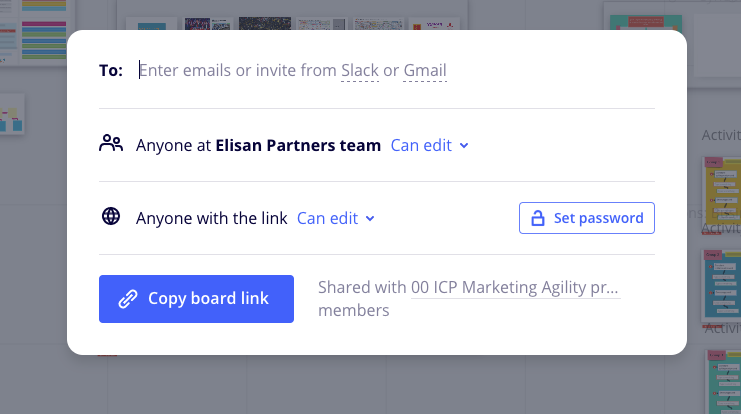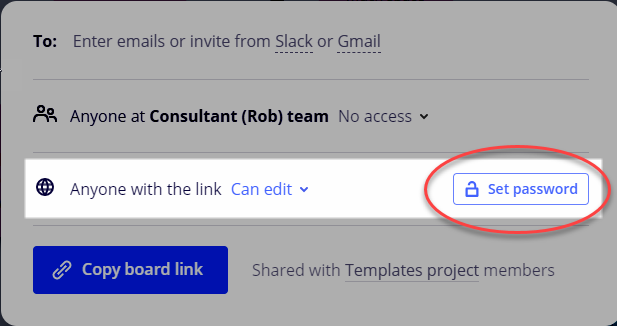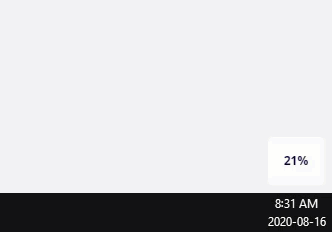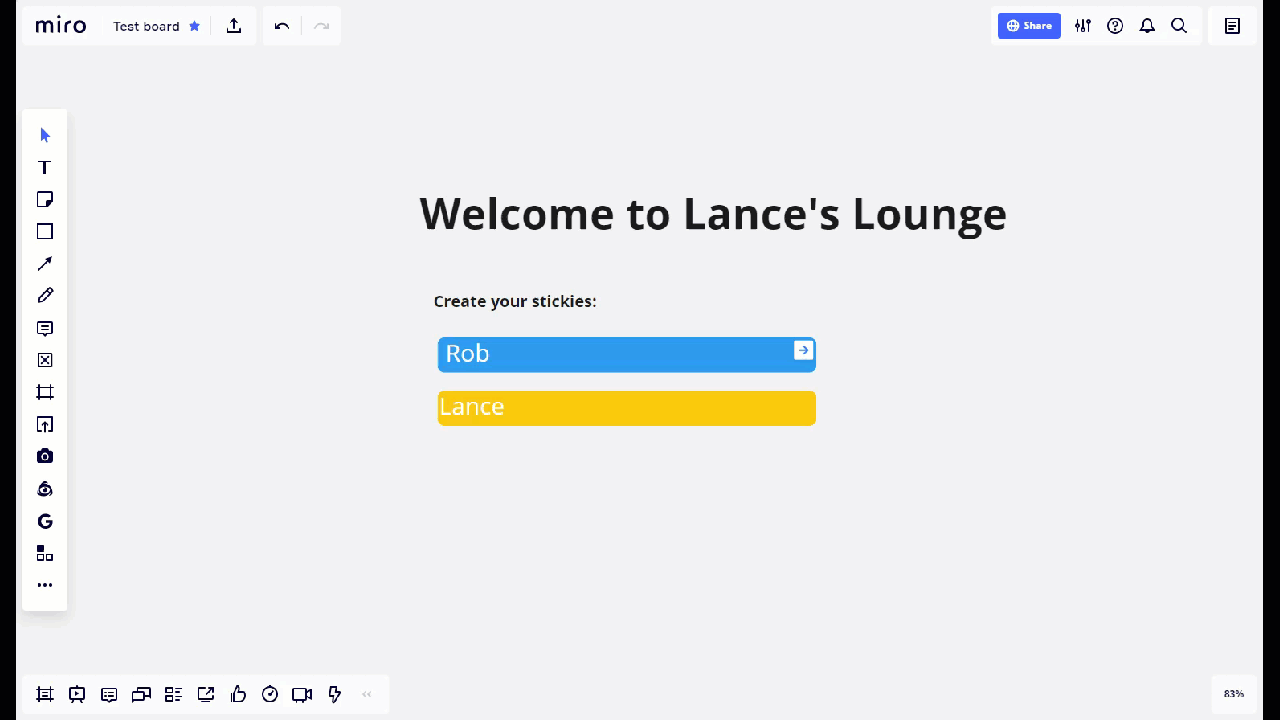I’m a new Miro user. I have the Consultant plan and will use Miro to do brainstorming with sticky notes with my clients. I’ll use the Miro tool for approx 2.5 hours to complete 3 short brainstorming exercises with each client (typically a group of 7 - 10 people). A few questions:
- How do I invite those people to access the boards I created? Note: That group will not access the board again. I’ll then use the same board (after erasing content from client #1 with client #2 later that day or the next.
- Should I have one board with the three sections or three boards each with its own template?
- Am I supposed to create a “Team” for each client?
Thank you for your assistance.








